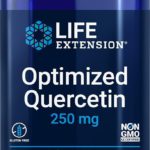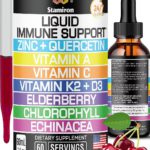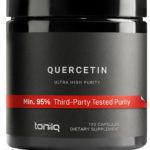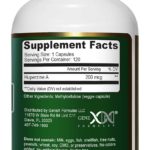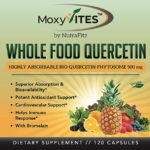Are you looking to boost the nutritional value of your diet? Look no further than quercetin-rich foods! Quercetin, a powerful antioxidant, is known for its various health benefits, including reducing inflammation, supporting heart health, and boosting the immune system. In this article, we will highlight the top 10 quercetin-rich foods that you should consider incorporating into your diet. From colorful berries to vibrant vegetables, these nutrient-packed foods will not only enhance your culinary experience but also provide you with an abundance of quercetin to promote overall well-being. So, let’s explore these delicious options and discover how they can contribute to a healthier you!

1. Apples
– Granny Smith apples
– Red Delicious apples
– Gala apples
– Fuji apples
Apples are a widely consumed fruit and are known for their various health benefits. Among the different varieties of apples, Granny Smith apples, Red Delicious apples, Gala apples, and Fuji apples are all excellent sources of quercetin. Quercetin is a flavonoid that has been studied for its potential antioxidant and anti-inflammatory properties. It may also have a positive impact on cardiovascular health and immune function.
Granny Smith apples are renowned for their tart flavor and crisp texture. They are rich in fiber and vitamin C, making them a nutritious choice for a snack or as an ingredient in a variety of dishes. Red Delicious apples, on the other hand, have a sweet and juicy taste. They are known for their vibrant red skin and are a great source of quercetin.
Gala apples are popular for their mellow and sweet taste. They are often used in both sweet and savory dishes. Fuji apples, with their sweet and crisp nature, are another excellent source of quercetin. They are commonly enjoyed as a snack or used in baked goods due to their pleasing flavor and texture.
2. Onions
– Red onions
– Yellow onions
– White onions
– Shallots
Onions are a staple ingredient in many cuisines around the world and are available in various types, each with its unique flavor profile. Red onions, known for their vibrant purple skin and mild taste, contain quercetin in notable quantities. They are often enjoyed raw in salads or on sandwiches, as their flavor is less pungent compared to other onion varieties.
Yellow onions, with their golden-brown skin and strong flavor, are also a rich source of quercetin. They are frequently used in cooked dishes, adding depth and aroma to soups, stews, and sauces. White onions, known for their sharp and slightly milder taste, are commonly used in Mexican cuisine and are a versatile option for various recipes.
Shallots, although smaller in size, pack a punch when it comes to flavor and nutritional value. They have a sweet and delicate taste that enhances the overall flavor of dishes. Shallots are often used in dressings, marinades, and sauces to provide a subtle yet distinctive taste.
3. Berries
– Blueberries
– Blackberries
– Raspberries
– Strawberries
Berries are not only delicious but also packed with essential nutrients, including quercetin. Blueberries, often referred to as nature’s superfood, are rich in antioxidants and are known for their high quercetin content. They are versatile and can be enjoyed on their own as a snack, added to smoothies, or incorporated into baked goods.
Blackberries, with their dark and juicy nature, are another fantastic source of quercetin. They have a slightly tart taste and are often used in pies, jams, and desserts. Raspberries, known for their vibrant red color and sweet-tart flavor, are a popular choice among berry lovers. They can be enjoyed fresh or used in various recipes, such as salads, yogurt parfaits, or even as a topping for pancakes.
Strawberries, with their refreshing taste and delightful aroma, are a favorite among many. They are not only delicious but also a rich source of quercetin. Strawberries are incredibly versatile and can be eaten on their own, added to smoothies, used in desserts, or included in savory dishes to add a touch of sweetness.
4. Citrus Fruits
– Oranges
– Grapefruits
– Lemons
– Limes
Citrus fruits are not only refreshing but also provide a significant amount of quercetin along with other beneficial compounds. Oranges, known for their juicy flesh and high vitamin C content, are also rich in quercetin. Whether enjoyed as a fresh snack, squeezed into juice, or incorporated into various recipes, oranges are a flavorful way to increase your quercetin intake.
Grapefruits, with their tangy and slightly bitter taste, are another citrus fruit that contains quercetin. They are often enjoyed as a refreshing breakfast option or used in salads and desserts to add a burst of flavor. Lemons, with their sour taste and vibrant yellow color, are known for their high vitamin C content, but they also contain quercetin. They are commonly used for their juice and zest, adding a tangy flavor to both sweet and savory dishes.
Limes, with their distinctive tartness, are another citrus fruit that can be included in your diet to boost your quercetin intake. They are often squeezed into beverages, used in marinades or dressings, and are a key ingredient in many popular dishes, such as guacamole.

5. Leafy Greens
– Spinach
– Kale
– Swiss chard
– Arugula
Leafy greens are an excellent addition to any balanced diet and are often hailed for their numerous health benefits. They are not only low in calories but are also rich in various vitamins, minerals, and antioxidants, including quercetin. Spinach, with its mild and slightly earthy taste, is a versatile leafy green that can be enjoyed raw in salads, sautéed as a side dish, or blended into smoothies.
Kale, known for its slightly bitter taste and robust texture, is a nutritional powerhouse and a great source of quercetin. It can be used in a variety of dishes, such as soups, stir-fries, or baked into crispy kale chips. Swiss chard, with its vibrant rainbow-colored stems and tender leaves, also contains quercetin. It can be sautéed, steamed, or added to salads and sandwiches for a pop of color and flavor.
Arugula, with its peppery and slightly nutty taste, is another leafy green that provides quercetin. It is often used as a base for salads or as a topping for pizzas and sandwiches. These leafy greens not only enhance the taste and texture of your meals but also provide a range of essential nutrients to support overall health.
6. Red Grapes
– Red Globe grapes
– Red Flame grapes
– Concord grapes
– Crimson grapes
Red grapes are not only a tasty snack but also a rich source of quercetin. When consumed in moderation, they can offer numerous health benefits. Red Globe grapes, known for their large size and sweet flavor, contain quercetin along with other beneficial compounds. They are often enjoyed on their own, added to fruit salads, or used in various dessert recipes.
Red Flame grapes, with their vibrant red hue and crisp texture, are another variety that provides quercetin. They are popular for their versatility and can be enjoyed as a refreshing snack or used in cooking and baking. Concord grapes, with their distinct sweet and tart taste, are often used to make grape juice and jelly. They are a flavorful way to incorporate quercetin into your diet.
Crimson grapes, a seedless variety, have a mild and sweet taste. They are commonly enjoyed as a snack or used in fruit salads and desserts. Including red grapes in your diet can not only satisfy your sweet tooth but also provide you with quercetin and other beneficial antioxidants.

7. Tomatoes
– Cherry tomatoes
– Beefsteak tomatoes
– Roma tomatoes
– Plum tomatoes
Tomatoes, although often categorized as a vegetable, are technically a fruit and are widely used in various cuisines around the world. They are not only flavorful but also a good source of quercetin. Cherry tomatoes, with their small size and sweet-tart taste, are excellent for snacking or as a vibrant addition to salads.
Beefsteak tomatoes, known for their large size and juicy nature, are a popular choice for sandwiches and burgers. They are also commonly used in sauces and salsas as their robust flavor adds depth to dishes. Roma tomatoes are known for their meaty texture and intense taste. They are often used in cooking, especially in Italian cuisine, as they provide a rich flavor base for sauces and soups.
Plum tomatoes, characterized by their oval shape and vibrant red color, are commonly used in making tomato paste, sauces, and even sun-dried tomatoes. They have a balance of sweetness and acidity, making them a great choice for a variety of culinary uses. Adding tomatoes to your diet can provide you with quercetin and other valuable nutrients.
8. Broccoli
– Broccoli florets
– Broccoli sprouts
– Broccolini
Broccoli is a cruciferous vegetable that is loved for its crispy texture and versatile nature. It is not only packed with essential vitamins and minerals but also contains quercetin. Broccoli florets, the most commonly consumed part of the vegetable, provide a significant amount of quercetin. They can be enjoyed steamed, roasted, or stir-fried as a side dish or used in salads and pasta dishes.
Broccoli sprouts, which have gained popularity in recent years, are even higher in quercetin compared to mature broccoli. They are often used as a nutritious addition to sandwiches, wraps, and salads. Broccolini, a hybrid vegetable combining the flavors of broccoli and Chinese kale, is another tasty option that provides quercetin. It can be sautéed, grilled, or roasted to accompany a wide range of main courses.
Adding broccoli and its variations to your diet can not only contribute to your quercetin intake but also provide you with a host of other health benefits.
9. Red Wine
– Cabernet Sauvignon
– Pinot Noir
– Merlot
– Syrah
Red wine, in moderation, has been associated with certain health benefits, and one of the reasons can be attributed to its quercetin content. While enjoying a glass of red wine, you can increase your quercetin intake. Different red wine varieties have varying levels of quercetin. Cabernet Sauvignon, known for its full-bodied and robust flavor, is a red wine that contains a notable amount of quercetin.
Pinot Noir, with its lighter body and delicate taste, is another red wine that provides a moderate amount of quercetin. It is often praised for its versatility and pairs well with a wide range of dishes. Merlot, characterized by its smooth and mellow flavor, also contains quercetin. It is a popular choice among red wine enthusiasts and can be enjoyed on its own or with various foods.
Syrah, known for its rich and bold taste, is another red wine that can contribute to your quercetin intake. It pairs well with hearty meats and robust flavors. While enjoying red wine responsibly, you can benefit from its quercetin content along with the potential cardiovascular advantages associated with moderate wine consumption.
10. Green Tea
– Matcha green tea
– Sencha green tea
– Gunpowder green tea
– Jasmine green tea
Green tea has been consumed for centuries and is highly regarded for its numerous health benefits. It contains a variety of antioxidants, including quercetin. Matcha green tea, made from finely ground tea leaves, is a popular choice known for its vibrant green color and slightly bitter taste. It provides a concentrated dose of quercetin as the entire tea leaf is ingested.
Sencha green tea, a staple in Japanese tea culture, is another variety that provides quercetin. It has a milder taste compared to matcha but still offers numerous health benefits. Gunpowder green tea, characterized by its tightly rolled leaves, is a green tea variety that can also contribute to your quercetin intake. It has a smoky and slightly nutty flavor, making it a unique tea experience.
Jasmine green tea, infused with the fragrant aroma of jasmine blossoms, is another delightful option. It combines the health benefits of green tea with a floral fragrance. Green tea, in its various forms, provides quercetin and can be enjoyed as a soothing beverage throughout the day.
Incorporating these quercetin-rich foods into your diet can be a flavorful and healthy way to support your overall well-being. Whether you prefer apples, onions, berries, citrus fruits, leafy greens, red grapes, tomatoes, broccoli, red wine, or green tea, there are numerous options available to suit your taste preferences. So why not add some of these delicious choices to your meals and snacks to reap the potential benefits of quercetin?
